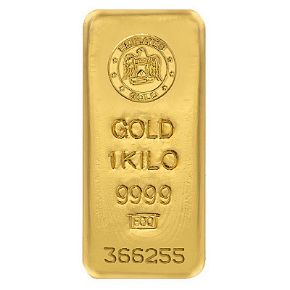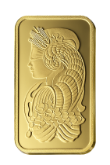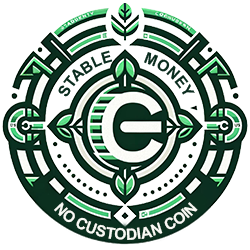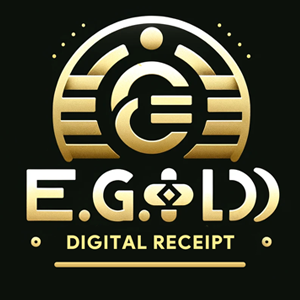
Why Testing Gold at Home is Important
Gold is a valuable asset, and verifying its authenticity is essential to avoid counterfeit products and ensure you’re getting your money’s worth. While professional gold testing is the most reliable, knowing how to test gold at home can save time and provide immediate results.
What You Need to Test Gold at Home
To perform a home gold test, you’ll need a few basic tools and items: A strong magnet for checking magnetic properties. Vinegar or nitric acid for simple chemical tests. A jeweler’s loupe or magnifying glass for inspecting stamps and markings. A digital scale to measure weight. Water for the float test.
Who Should Use Home Gold Testing Methods
Home gold testing is ideal for anyone who owns gold jewelry, coins, or bars and wants to verify their authenticity. It’s especially useful for collectors, buyers of second-hand gold, and individuals who’ve inherited gold items without certificates.
Where to Start with Gold Testing at Home
Begin by identifying visible markings on the gold item. Most authentic gold pieces are stamped with a karat number (e.g., 10K, 14K, 22K) or a fineness mark (e.g., 999 for 24-karat gold). Use a magnifying glass to locate and examine these details.
When to Perform a Home Gold Test
Testing gold at home is most useful in the following situations: Before purchasing gold from a private seller. After receiving gold as a gift or inheritance. Periodically, to ensure your gold remains untampered.
How to Test Gold at Home: Step-by-Step Methods
Magnet Test: Pure gold is not magnetic. Pass a strong magnet over your gold item. If it sticks or attracts, the item likely contains non-gold metals.
Vinegar Test: Place a drop of white vinegar on the gold item. Genuine gold will not react, while fake gold may change color.
Float Test: Fill a container with water and drop the gold item into it. Gold is dense and will sink immediately. If it floats, it’s likely not real gold.
Scratch Test: Gently scratch the gold item against a ceramic plate. Real gold will leave a golden streak, while fake gold will leave a black streak.
Weight Test: Use a digital scale to measure the weight of your gold. Compare it to standard gold weight charts based on its size and purity.
Stamp Inspection: Authentic gold pieces are stamped with karat or purity markings. Examine these under a magnifying glass for accuracy and wear.
Nitric Acid Test: Carefully apply a small drop of nitric acid to the gold item. Genuine gold will not react, while fake gold may turn green or bubble.
Common Signs of Fake Gold
Knowing the signs of fake gold can save you time and money: Missing or inconsistent markings. Light weight compared to its size. Magnetic attraction. Discoloration, particularly around edges or worn areas. Reacts to vinegar or acid tests.
The Limitations of Home Gold Testing
While home gold tests are convenient, they may not be as accurate as professional testing. For high-value items, consider visiting a jeweler or gold testing center for advanced methods like X-ray fluorescence (XRF) or electronic gold testers.
Why Gold Purity Matters
Gold purity directly impacts its value and usability. Higher karat gold is softer and more valuable, while lower karat gold contains more alloy metals. Testing your gold ensures you’re aware of its true composition.
Storing Tested Gold Safely
Once you’ve verified your gold’s authenticity, proper storage is essential. Use secure containers or safes to prevent damage or theft. Label items with their purity details for easy identification.
How Home Gold Tests Save Money
Performing a home gold test can save money by helping you avoid counterfeit purchases. It also eliminates the need for immediate professional services in non-critical situations.
Frequently Asked Questions About Home Gold Tests
Is the magnet test reliable? Yes, but it’s best used in combination with other tests. Pure gold is not magnetic, but some fake gold may also pass this test.
Can I damage my gold by testing it? Most home tests are non-invasive, but the scratch and acid tests may leave minor marks. Use these with caution.
What is the most accurate home test for gold? The nitric acid test is the most accurate for home use, but handle it carefully and wear gloves.
Does real gold tarnish? Pure gold does not tarnish. If your gold item shows tarnish, it likely contains other metals.
Can I test gold-plated items at home? Yes, but results may be tricky. Gold plating may pass some tests, so additional methods like the acid test are necessary.
How can I test gold without chemicals? The magnet, float, and weight tests are non-chemical methods that provide basic insights.
What is a karat marking? A karat marking indicates the purity of gold. For example, 24K is pure gold, while 14K is 58.3% gold.
Can I trust online guides for gold testing? Yes, but ensure you follow instructions from reputable sources to avoid inaccurate results.
Should I test my gold regularly? Regular testing isn’t necessary unless you suspect tampering or are preparing to sell.
Where can I find nitric acid for testing? Nitric acid can be purchased online or at specialty stores, but it should be used with care and proper safety equipment.
How to Enhance Accuracy in Home Gold Testing
If you’re conducting gold tests at home, here are tips to improve the accuracy of your results:
Combine Tests: Using multiple methods, such as the magnet test and vinegar test, provides more reliable results than relying on just one.
Handle Gold Carefully: Avoid excessive handling during testing to prevent scratches or wear that could alter its appearance or value.
Use Proper Tools: Invest in quality tools like a strong magnet, digital scale, and jeweler’s loupe to ensure precision.
Practice First: Test on lower-value gold items or samples to build confidence before testing valuable pieces.
How to Test Gold Coins vs. Gold Bars at Home
Testing gold coins and gold bars requires slightly different approaches:
Gold Coins: Focus on weight and markings, as coins often have precise specifications for their design, diameter, and thickness. The weight should match official mint standards.
Gold Bars: Check for purity markings and unique serial numbers. Bars are typically easier to test with methods like the acid test or water test due to their uniform shape.
When to Seek Professional Gold Testing
While home testing is effective for initial checks, there are times when professional testing is essential:
When verifying the authenticity of high-value gold items. Before selling gold to ensure accurate valuation. If home tests yield inconclusive or conflicting results.
Professional testing centers use advanced tools like XRF machines or spectrometers to analyze gold’s composition with precision.
Common Myths About Testing Gold at Home
Myth 1: Real gold always sinks in water.
While true for solid gold items, hollow or lightweight gold-plated items might also sink, leading to misleading results.
Myth 2: Pure gold is indestructible.
While gold is resistant to corrosion, it is soft and can scratch or deform under pressure.
Myth 3: All stamps indicate real gold.
Counterfeit items often carry fake stamps, so always combine visual inspection with additional tests.
The Environmental Impact of Home Gold Testing
Home gold testing is a more sustainable option compared to frequent visits to professional services. By using minimal resources and avoiding unnecessary travel, you reduce your carbon footprint. Additionally, non-invasive tests like the magnet and water tests are eco-friendly and safe.
The Role of Gold Testing in Protecting Investments
Gold is a significant investment, whether in the form of jewelry, coins, or bars. Regular testing ensures that your gold retains its value and authenticity, providing peace of mind for buyers and sellers alike. For example, detecting fake gold early prevents financial losses and safeguards your portfolio.
How Home Gold Testing Supports the Second-Hand Market
The second-hand gold market thrives on trust. By testing gold at home, buyers and sellers can verify the quality of items being exchanged. This fosters transparency and confidence in transactions, enhancing the overall market experience.
Why Knowledge of Gold Purity is Essential for Buyers
Understanding gold purity helps buyers make informed decisions and avoid overpaying for low-purity items. For example, 24K gold is considered pure but is often too soft for jewelry, while 18K gold offers a balance of purity and durability. Testing your gold ensures you know exactly what you’re getting.
Expanding Your Gold Testing Skills
If you’re interested in mastering gold testing, consider additional resources:
Online Tutorials: Watch step-by-step videos to see gold testing methods in action.
Books and Guides: Invest in resources that cover advanced testing techniques.
Local Classes: Some jewelers or hobbyist groups offer workshops on gold testing and valuation.
How to Store Gold Testing Tools
Proper storage of your testing tools ensures their longevity and accuracy:
Keep tools in a dry, dust-free environment. Store chemicals like nitric acid in a cool, secure location away from children and pets. Clean tools like scales and magnifying glasses after use to prevent residue buildup.
Testing gold at home is a practical and cost-effective way to verify authenticity and protect your investment. By mastering these simple methods, you can confidently assess the value and purity of your gold without relying solely on professional services.
NOTE
This Content is the copyrighted content of EE.GOLD. All rights are reserved. You are welcome to share or use our content only by including direct links to our website. Any other form of reproduction, distribution, or use without proper attribution is strictly prohibited.
This Content is intended solely for educational purposes. The information provided does not constitute financial or investment advice.
Please note that Digital Storage Receipt, Secure Storage Solutions, and Physical Gold Sales are the only services offered by EE.GOLD.
We strictly adhere to government regulations and are firmly against all illegal financial or investment activities globally.
For further inquiries, feel free to contact us through our official channels.










.png)

